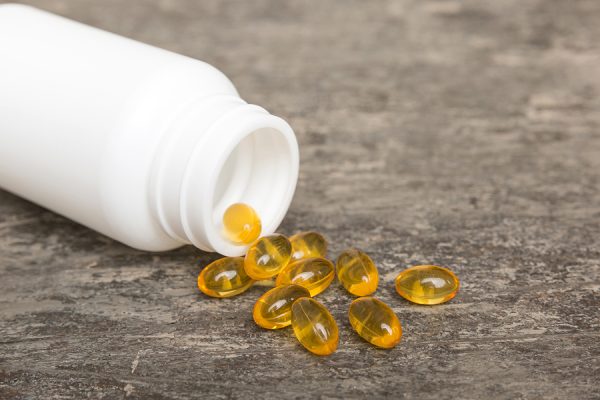By David Blyweiss, M.D., Advanced Natural Wellness
When you eat citrus fruits, cantaloupe or broccoli, you are boosting your vitamin C levels. Nuts, seeds, avocados and spinach are going to increase your vitamin E intake. And you will get plenty of vitamin A from your leafy greens, along with your orange, yellow and red vegetables.
But where do you get your vitamin D?
With the exception of a few fatty fish, very few foods naturally contain it. So it’s hard to get enough vitamin D in your diet.
Plus, vitamin D isn’t really a vitamin at all!
It’s a steroid hormone that’s produced when your skin is exposed to ultraviolet (UVB) radiation from the sun. When your skin is exposed to these rays, it converts a form of cholesterol into vitamin D3. This is why it’s often referred to as the “sunshine vitamin.”
Most importantly, vitamin D has a direct effect on the expression of over 200 genes related to autoimmune diseases, cancer, cardiovascular health and metabolic processes. So it’s a vitally important nutrient.
What Can Vitamin D do For You?
When most people think of vitamin D, the first thing that comes to mind is usually bone health. And it’s true. Vitamin D is necessary for your body to absorb calcium to help build bone mass. If your levels are low, you’re more likely to experience bone loss, fractures, demineralization and osteoporosis.
But the benefits of Vitamin D extend well beyond healthy bones.
For example, when you wake up in the morning do you have to move around for a while to get rid of morning stiffness? As the day wears on, do aches, pains and tender points plague you? Do you get headaches, feel fatigued or suffer from poor sleep?
Interestingly, vitamin D deficiency causes weakness and cramps in the muscles. It also contributes to vague aches and pains, fatigue, and can even make your bones hurt. So it’s no wonder that low levels of vitamin D are common in patients who suffer chronic pain or have fibromyalgia.
But guess what happens when people plagued with chronic pain – even fibromyalgia – boost their vitamin D levels?
Their pain levels improve. Their energy levels and physical strength increase. They wake up refreshed and get moving around more quickly. Overall, they show improved physical function and fewer tender points.
And did you know that patients with autoimmune disorders tend to have low levels of vitamin D?
I’m talking about life-changing conditions that destroy quality of life, like multiple sclerosis, type 1 diabetes, rheumatoid arthritis and the most common form of lupus, systemic lupus erythematosus (SLE).
Vitamin D could greatly reduce the onset of these types of health conditions, improve symptoms in patients who have already been diagnosed and, in some cases, even send it into remission.
Here’s another thing. Depleted levels of vitamin D raise your risk of several deadly forms of cancer. I’m talking about colon cancer, ovarian cancer, prostate cancer, breast cancer, non-Hodgkin’s lymphoma and even skin melanoma.
As if all of that is not enough, vitamin D deficiency is associated with cardiovascular disease, dementia, diabetes and depression. Even if you’re only moderately deficient, your odds of all of these age-related health problems will increase. So it’s extremely important to keep your vitamin D levels up to par.
How Much Vitamin D Should You Take?
If you enjoy living in good health, I recommend getting tested for vitamin insufficiency. All you have to do is ask your doctor for a 25-hydroxy vitamin D test. Set your goal for maintaining levels of at least 45-65 ng/ml.
If you have been diagnosed with an autoimmune disease, closer to 65 to 85 ng/ml is better. These higher levels will also help boost your immune response against viral infections, which is something we all want to do these days.
• If your levels are 30 ng/ml or lower, take at least 8,000 IU of vitamin D3 in the cholecalciferol form each day and retest in three months. (For best results, look for one that has a low dose of vitamin K2 and a bit of vitamin A also,….both of them fat soluble vitamins too.
• If your levels are 31 to 40 ng/ml, supplement with 5,000 IU daily for three months. Then retest.
• If your numbers are over 40, you’re not deficient. Still, it’s a good idea to take 2,000-4,000 IU daily to maintain sufficient levels.
Don’t count on getting your vitamin D from the sun or your food. During the winter months, the sun is too far south in more than half of the states in the U.S. for people to even generate vitamin D. And the only appreciable food source is salmon.
The test is easy, insurance typically pays for it, and vitamin D supplements themselves are inexpensive. So there’s no reason not to get tested and improve the levels of this most naturally protective component of our complex human physiology .
SOURCES:
Hossein-nezhad A, Spira A, Holick MF. Influence of vitamin D status and vitamin D3 supplementation on genome wide expression of white blood cells: a randomized double-blind clinical trial. PLoS One. 2013;8(3):e58725.
Yilmaz R, Salli A, Cingoz HT, Kucuksen S, Ugurlu H. Efficacy of vitamin D replacement therapy on patients with chronic nonspecific widespread musculoskeletal pain with vitamin D deficiency. Int J Rheum Dis. 2016 Dec;19(12):1255-1262.
Shipton EA, Shipton EE. Vitamin D and Pain: Vitamin D and Its Role in the Aetiology and Maintenance of Chronic Pain States and Associated Comorbidities. Pain Res Treat. 2015 19;2015:904967.
Yang CY, Leung PS, Adamopoulos IE, Gershwin ME. The implication of vitamin D and autoimmunity: a comprehensive review. Clin Rev Allergy Immunol. 2013;45(2):217-226.
Kostoglou-Athanassiou I, Athanassiou P, Lyraki A, Raftakis I, Antoniadis C. Vitamin D and rheumatoid arthritis. Ther Adv Endocrinol Metab. 2012;3(6):181-187.
Savastio S, Cadario F, Beux S, Giorgi A, Genoni G, Bagnati M, et al. Vitamin D and Type I Diabetes. Open Rheumatol J. 2018;12(Suppl-1,M8):289-299. Grant WB, Al Anouti F, Boucher BJ, Dursun E, Gezen-Ak D, Jude EB, Karonova T, Pludowski P. A Narrative Review of the Evidence for Variations in Serum 25-Hydroxyvitamin D Concentration Thresholds for Optimal Health. Nutrients. 2022 Feb 2;14(3):639.






